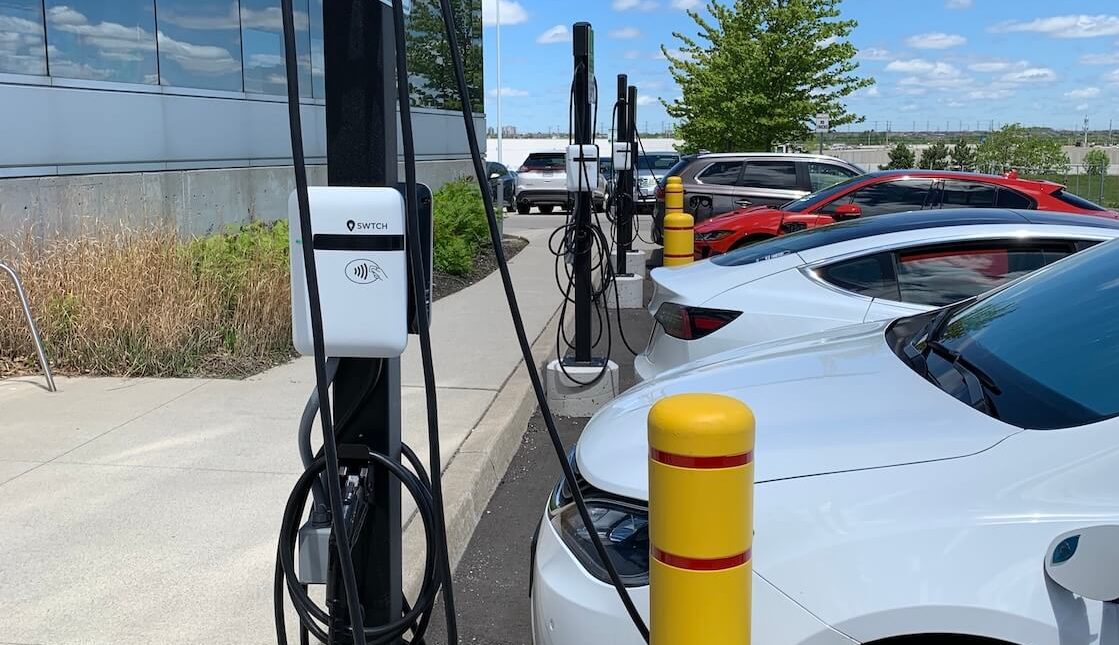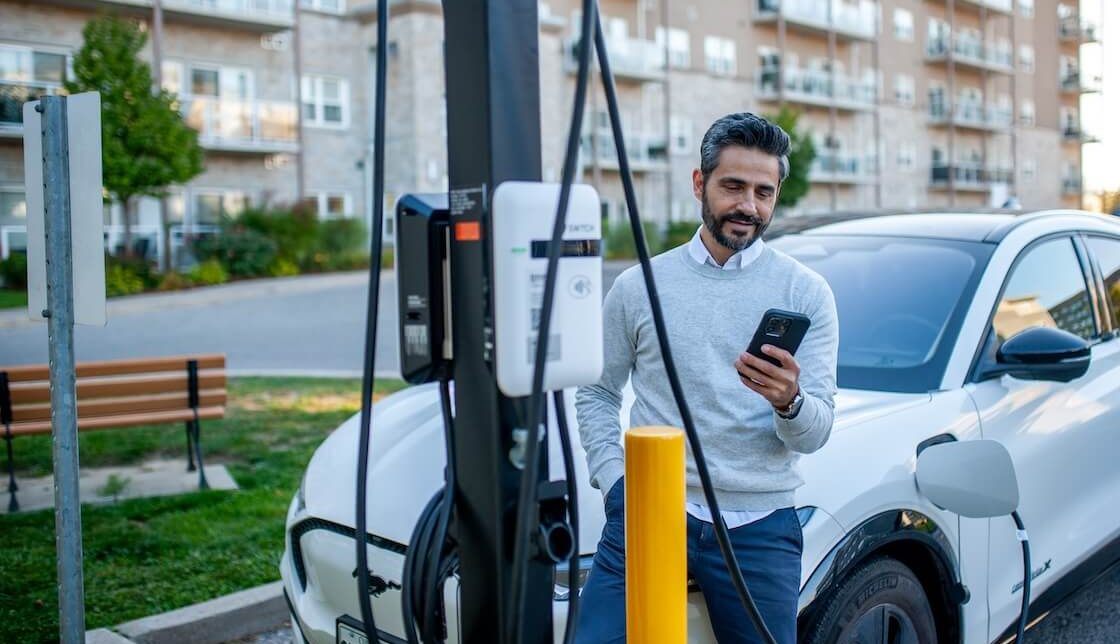How to have great EV charging etiquette at home, at work, and everywhere else
One of the realities of EV charging today is that, often, a charging experience can be made or broken by the behavior and etiquette of other EV drivers.
Little things that people do, usually unknowingly and with no intention of causing others problems—can lead to delays and frustration that might be avoided with a little more thought.
Want to be the best, most conscientious EV charging pal you can be? Here’s a quick guide to the etiquette you ought to follow.
Tips for good EV charging etiquette in any environment
No matter what environment you’re looking to charge up in, there are certain “golden rules” that ought to be followed to ensure the safety of your vehicle, others’ vehicles, and all drivers and passengers in the vicinity of a charging station.
Don’t unplug other vehicles without permission
With very, very few exceptions, it is considered bad form to unplug another driver’s vehicle so that you can plug in your own.
Sometimes, drivers return to their vehicles and discover that the state of charge they needed to reach for their upcoming trip was not reached because somebody else unplugged their car.
Other times, damage can be done to a vehicle if the connector is locked to the car and someone attempts to disengage it or yank it out.
In some circumstances, there is an argument to be made that it is acceptable to unplug a vehicle. If you are relying on a Level 2 charger at a hotel, for example, and you’re 100% positive that someone’s charging session is complete but they’re unlikely to return (for example, the charging session ended in the middle of the night), you could make a case for unplugging the connector from the vehicle and connecting your car to the charger.
But in general, in nearly all cases, it’s just better not to touch another person’s car. It reduces the odds of something happening and leaving you on the hook for it and also of just provoking an unnecessary argument.

Be mindful of charging time limits
Many public charging stations—mostly DCFC or Level 3 stations—have time limits posted nearby that drivers are expected to adhere to. These limits exist to encourage drivers to be more thoughtful about plugging in and sometimes even to get a car out of the way if it’s reached a high state of charge (usually over 80%) and is therefore charging more slowly than a car with a lower state of charge would.
Sometimes, a charging station just doesn’t get you enough charge in the allotted time, and in those cases, it’s usually acceptable to either overrun the mandated charging session time limit or to end the charging session and immediately start a new one, so as to avoid fines.
But if you’re in a situation where there’s a long lineup of cars, your car is about to exceed the time limit, and you have opportunities to plug in again later in your day, it’s considered best to unplug and start another charging session later on.
Move your vehicle promptly after charging
Once your car is charged, move it to free up the spot for others. Maybe you intend to remain at the location to eat some lunch or stretch your legs—that’s fine. Just move the car to an available, non-charging parking spot to allow someone else to plug in.
Try to plug into the “right” charging station for your car
Not all EVs charge up at the same rate; some will max out at a lower rate than others and sometimes much lower than the ability of a particular charging station to deliver.
If you’re in an area with multiple free DCFC charging stations, it’s considered good form to choose the station with the lowest delivery speed that still allows your car to charge up at its maximum speed. This will allow someone else who arrives and whose car can charge up faster than yours to enjoy a more efficient charging experience, possibly freeing up the charger more quickly for yet another vehicle that comes along looking to plug in.
If all other stations are already taken, absolutely feel free to plug in at a DCFC station that far exceeds your car’s maximum charging speed. But if you’re able to choose a slower station without impacting your vehicle’s charging session, it’s definitely something other drivers will appreciate.

Keep the charging area clean and tidy
Keeping the charging area tidy is especially important with regard to charging cables. Cables that are left lying around or suspended in an unsafe way could be a hazard (one of the reasons why we suggest using charging station pedestals with cable retractors).
Report any issues with charging stations
Sometimes charging stations don’t work for one reason or another. It’s important to take the time to reach out to the charging station operator or at least alert a team member at the location where the charging station is located. This helps improve the likelihood that future drivers will be able to use the charging station without issue.
In theory, charging station operators should generally know that a charger is out of service pretty quickly—leading EV charging platforms like SWTCH will serve up proactive notices when an error occurs—but sometimes odd quirks come up, so it’s still appreciated that you reach out if you’re able.

Tips for good EV charging etiquette in a multifamily home environment
Charging at home, and particularly at a multifamily property where there may be several drivers all sharing a limited number of charging stations, can mean tailoring your charging habits to promote harmony at your building and ensure everyone has fair access.
In addition to the general recommendations above, here are some practices that are considered important to multifamily charging etiquette.
Understand and follow charging rules and policies at your property
At most multifamily properties with EV charging, there will be rules or requests in place that tenants and guests are asked to follow. Most of the time, those policies will map onto the same kinds of concerns covered in the general etiquette section above, but there may be some additional policies in place that go beyond those.
As a default, just follow those rules, as they’ve almost certainly been thought up to address particularities of your building. If ever there’s a rule you’re unclear about or which you think is unfair in some way, do reach out to building management to have a discussion. They’ll likely be happy to chat with you and try to find a solution.
Communicate with other neighbors who use the chargers
Sometimes, despite the best efforts and intentions of all involved, the policies in place at a particular building may not produce a perfect outcome for everyone who needs to use the charging stations.
For issues you encounter related to the behavior of other drivers—you might, for example, find there’s one person at your building who seems to ALWAYS be plugged in—you can of course speak to building management, but it’s also not a bad idea to speak directly with your neighbor.
Sometimes, the individual just doesn’t realize that their behavior is causing inconvenience, or maybe they have a great reason and it’s an unavoidable situation. Whatever the case, most people will probably be happy to discuss with you directly and maybe come to a friendly agreement that addresses your concerns. This isn’t a must-do by any means, but it can be appreciated. Nobody likes “getting in trouble” with building management.

Be prepared with alternatives in the event access is disrupted
This is less an issue related to etiquette than something that will just be helpful to you, but it’s advisable to be familiar with the general public charging landscape in your area on the off chance that access to charging at your property is disrupted for any reason.
Being caught off guard and unprepared is a recipe for stress, and while it is certainly less convenient to have to go and find a public charging station to use while one or more of your onsite charging stations are unavailable, you’ll at least have a plan in mind that you can fall back on if needed.
Tips for good EV charging etiquette at work
Workplace EV charging likely requires similar etiquette to what is advised for multifamily environments, though it can be made a bit more complicated depending on the specific nature of the building you work in and the parking facility you use. Expectations around behavior, plus who to communicate with in the event of a problem, would likely be very different for a small business vs. a business that is located in a busy tower in the heart of the city.
Though not all of these may apply to all workplace situations, here are some guidelines for good etiquette for charging your car while at work.
Follow company policies for EV charging
Whether you’re looking to charge up in a small lot accessible only to other employees of your company or you’re looking to plug in at a busy garage for a downtown commercial complex, there are almost certainly rules specific to your workplace chargers that you will be requested to follow.
As a general rule, the best course is to follow them. If there are rules that don’t make sense or are unfair in some way, it’s best to discuss your concerns with whatever party is responsible for the charging stations.

Communicate with coworkers about your charging needs
If you work in a relatively small office with private parking for employees and guests, chances are you’ll be able to communicate with your coworkers to work things out if ever a car needs to be moved or if you just need to get a sense of how long someone’s car will be left connected to the charger. It’s worth doing!
Just knowing which cars belong to who and (hopefully) being able to ask that they move their car when it’s done charging can go a long way towards making the experience of sharing charging stations go more smoothly.
Tips to help new EV owners have great charging etiquette
Beyond the steps outlined in the sections above, there are a few things that are worth doing to help you plan your charging sessions better and be a more proactively helpful individual in situations where you are sharing a private or public charging station.
Pay attention to how your vehicle charges up
Different vehicles charge at different rates, both in terms of the maximum rate at which they charge and also the dropoffs in charging speed that most vehicles will have when they approach 70%-80% state of charge, and when they exceed 80% state of charge. They can also require charging for different lengths of time.
Pay attention to your charging sessions—particularly DCFC charging sessions—and try to make a mental note of what your car’s maximum charging speed is, at what states of charge your vehicle’s charging speed experiences drop-offs, and the approximate amount of time your vehicle takes to charge up under normal circumstances, vs. when it’s cold, when it’s hot, etc.
At the end of the day, knowing these things will not necessarily impact your charging session in a direct way. Still, you’ll be able to better select charging stations to use, plan your charging sessions, understand how long a charging session is likely to take under different circumstances, and have an informed conversation with any other EV drivers who might have questions about how you’re conducting one of your charging sessions.

Get the right charging (and car) apps on your phone
Increasingly, charging networks are allowing roaming to occur, meaning you can access charging stations belonging to one network via an app belonging to a different network. Still, it is advisable to have multiple apps on your phone, just in case.
At a baseline, it’s worth ensuring that you have at least one charging app that allows you to access the charging stations you want to use, plus an app for your car itself if such an app is available. This will help you start charging sessions from your phone whenever needed, and also to monitor the status of your vehicle just in case the charging app doesn’t deliver updates to you when charging sessions are complete, when errors occur, etc.
To go a little further, it can be worth having the apps for every single charging network you might use over the course of a journey. As a default plan, just sticking with your main app is fine—90% of the time, you’ll be able to complete your charging sessions without a hitch. But on occasions when weird errors occur, you might find that you have better luck with the native app than with a different app that allows you to access a given charger.
The primary goal is to ensure that your own charging sessions go smoothly, but particularly when there are other drivers looking to use a charging station after you, being well-prepared can make a big difference to their experience as well.

The number of EV charging stations is increasing, but the number of EV drivers is also increasing—and increasing faster than the number of chargers.
Over time, it’s likely there will be periods where charging stations feel abundantly accessible and other periods where it feels difficult to charge up quickly or efficiently because of high demand.
Throughout it all, having good charging habits will serve you—and others—well in producing the best possible circumstances for everyone looking to top up their car’s battery. To the extent that it’s an effort to have great charging etiquette, it’s worth it—we’d all hope for the same from the others we encounter.
Want to keep up with the world of EVs and EV charging?






